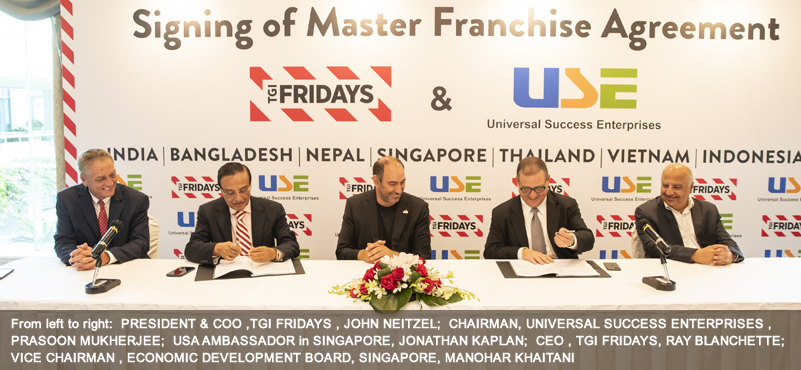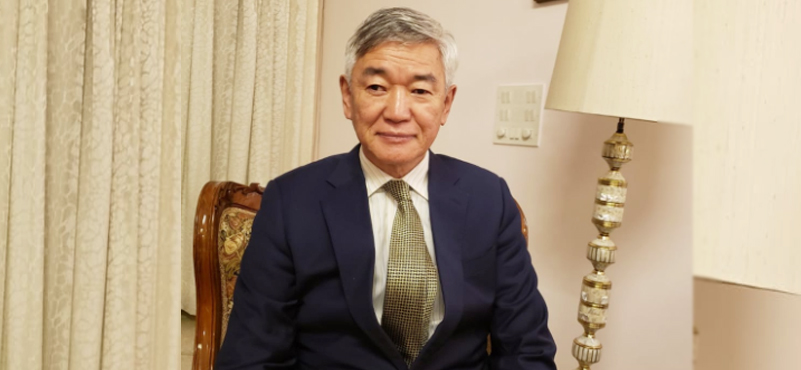Speaking to TF at the sidelines of Zambia road-show held recently at the Park Hotel in the capital, H. Sikapale Chinzewe, Charge’ d’affaires ad interim, Zambia High Commission said that Zambia was keen to re-launch its national carrier. He hoped that with its launch, Lusaka and New Delhi will be linked by direct flights again. An excerpt of the conversation:

In what could lend a major pull to tourism ties between India and the southern African nation, Zambian government is close to unveiling a national air-carrier again. Before it suspended operations in late 2009, Zambian Airline connected Lusaka and New Delhi with direct flights. “I think the Zambian government is very keen to establish a national airline. It is an issue which is already on the table. We should have already had a national airline in place by now, but things are moving forward in that direction. Instead of going through Dubai or Addis Ababa, we would want direct connectivity between Zambian cities of Lusaka and Livingstone to key Indian cities,” shared Sikapale Chinzewe, Charge’ d’affaires ad interim, Zambia High Commission.
Refusing to share a deadline for unveiling the carrier, he stressed that the issue remained at the very top of Zambian government’s agenda. “Rest assured, it is at the very top of our government’s agenda as tourism has been prioritized as a key sector for national growth. We would like to all elements related to augmenting tourism, in Zambia, grow. Tourism is a very critical element for the Zambian economy. This road-show is a testimony to our commitment for growth in tourism,” he said.
Crediting his government for formulating pro-tourism and pro-growth policies, he shared that Zambia had recently rolled out e-visa for travellers. “It eliminates the need for physically coming to the embassy to get a visa. As per our new visa policy, children under the age of sixteen accompanied by family do not need a visa. Therefore, the entire process involving paper documentation and formalities have been made hassle-free,” noted Sikapale Chinzewe.
He also urged Indian air-carriers to consider flying to Zambian cities; he argued that it would make the cost of flying cheaper for tourists fuelling footfalls. “If we can have some Indian carriers push for direct-connectivity, we must try and accomplish it. When Zambian Airways was operational, we used to have direct flights to New Delhi. I am sure that the new national airline will basically achieve it again,” he said.
Coming to Zambia as a destination, Sikapale Chinzewe noted that it had lots to offer in terms of tourism. He said that it housed one of the seven natural wonders of the world – the Victoria Falls. “We have one of the largest wildlife parks in Africa. It is a country which has all the big five animals and many other activities of interest for tourists,” he said.
Sharing his understanding on the larger people-to-people connect between two nations, he believed that the relations between Zambia and India went way back to the days before Zambia’s independence in 1964. “India played a very critical role in our struggle for liberation from the colonial rule,” he said.
Arguing that world had turned into a global village, he said that tourism was a natural outcome of the process. “Zambians want to come to India to understand and appreciate its art, culture and heritage. You have got the Taj Mahal, the Red Fort and many others. So, I think in India’s case, I think tourism plays the role of a meeting-point,” he substantiated.
He batted for better understanding and appreciation of each-other’s culture and heritage, stating that tourism could help achieve more synergy. When asked about the foray into Indian market with the road-show, he said that India was developing at a pulsating rate. “The GDP rate is high, but what makes India important is also the fact that there are over 250 million middle class Indians; the number of High Net worth Individuals is increasing. Those are disposable incomes. Which is a better place that Zambia to spend that money,” he explained. He further added that Zambia consciously wanted to keep the travel cost on the lower end of the spectrum to boost footfalls.




































